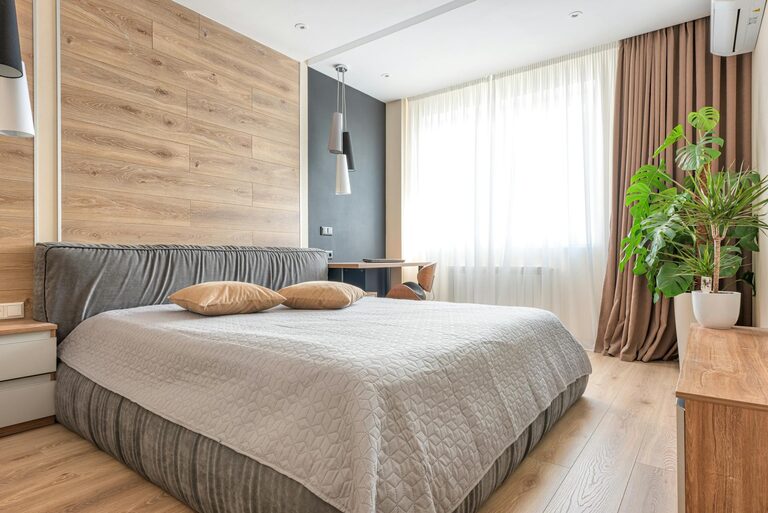
A dark room can sometimes feel cramped, dull, or gloomy, even if it’s nicely furnished. Fortunately, brightening up a space doesn’t always require expensive renovations or drastic changes. With some simple adjustments and creative ideas, you can transform a dark room into a welcoming, airy haven.
In this post, we’ll explore practical tips and tricks to bring more light into your room and create a cheerful atmosphere. Whether you’re working with limited natural light or just want to amplify the brightness, these ideas are easy to implement and effective.
Understand Why Your Room Feels Dark
Before diving into solutions, it helps to know what’s making your room feel dark. Common reasons include:
– Limited natural light: Small windows, shaded surroundings, or north-facing rooms receive less sunlight.
– Heavy or dark window coverings: Thick curtains or dark blinds block out light.
– Dark wall colors or furniture: Dark hues absorb light rather than reflect it.
– Clutter or bulky items: Too many objects can absorb light and make the space feel cramped.
– Insufficient lighting: Lack of appropriate light fixtures or bulbs.
Now let’s review quick ideas to counter these factors.
Maximize Natural Light
Natural light brightens any room and is the most inviting form of lighting.
Use Light, Sheer Curtains
Replace heavy drapes with sheer or lightweight curtains to allow more sunlight through. Sheer white or pastel fabrics brighten the space while maintaining privacy.
Clean Windows and Remove Obstacles
Ensure windows are clean both inside and outside to let in maximum light. Remove furniture or plants that block sunlight from entering the room.
Use Mirrors Strategically
Mirrors reflect light and create the illusion of a larger, brighter room. Place a large mirror opposite a window or near a light source to bounce light around.
Enhance Artificial Lighting
If natural light is limited, boosting artificial lighting can make a big difference.
Layer Your Lighting
Use a combination of ambient, task, and accent lighting:
– Ambient: Overhead lights like ceiling fixtures or chandeliers.
– Task: Desk lamps, reading lights, or under-cabinet lighting.
– Accent: Wall sconces or LED strips to highlight features.
Choose Bright, Warm Bulbs
Opt for LED bulbs with a color temperature between 2700K and 3000K for warm yet bright light. High lumen bulbs increase brightness without harsh glare.
Add Floor and Table Lamps
In dark corners or near seating areas, place lamps to create pools of light. Lamps with reflective shades enhance brightness.
Brighten Walls and Surfaces
Color plays a huge role in how light is perceived.
Paint Walls in Light Colors
Light shades like whites, creams, pale blues, or soft grays reflect more light than dark colors. A fresh coat of light paint instantly opens up a room.
Use Glossy or Semi-Gloss Paint Finishes
These finishes reflect more light than matte paints, adding subtle shine to walls.
Choose Light-Colored Furniture and Decor
Select sofas, rugs, and accessories in neutral or pastel hues to avoid absorbing light.
Declutter and Simplify
A cluttered room feels darker and cramped.
Keep Surfaces Clear
Limit knick-knacks and avoid overcrowding tables or shelves.
Use Minimal Window Treatments
Light, simple window treatments let more light in and reduce visual clutter.
Rearrange Furniture
Position larger pieces away from light sources to ensure they don’t block light flow through the room.
Add Reflective and Light-Enhancing Decor
Certain materials and decor choices can increase brightness.
Incorporate Metallic or Glass Elements
Mirrored furniture, glass tables, or metallic accents in gold, silver, or bronze reflect light well.
Use Light-Colored Rugs and Throws
Textiles in bright or reflective colors soften the space while helping keep it airy.
Hang Light-Colored Artwork
Art with bright backgrounds or colors can add visual lightness.
Use Plants Wisely
Plants add freshness but can also darken a space if overused.
– Choose small to medium-sized plants placed near windows to benefit from natural light.
– Avoid overcrowding plants to prevent blocking light.
– Opt for plants with light-colored or variegated leaves that reflect light.
Consider Window Film or Skylights
For long-term improvement:
– Window films that increase daylight while reducing glare.
– Install skylights or solar tubes to bring in more natural light from above (may require professional help).
Final Thoughts
Brightening a dark room is all about maximizing light and minimizing factors that absorb or block it. Combining several of these quick ideas should help you create a lighter, more pleasant space without expensive or challenging renovations.
Try starting with lighting improvements and light paint colors, then add mirrors and reflective decor. With creativity and careful choices, even the darkest room can become a bright and cheerful spot in your home. Happy decorating!
